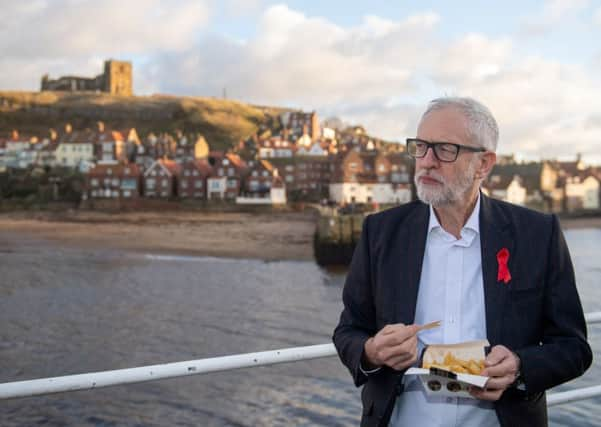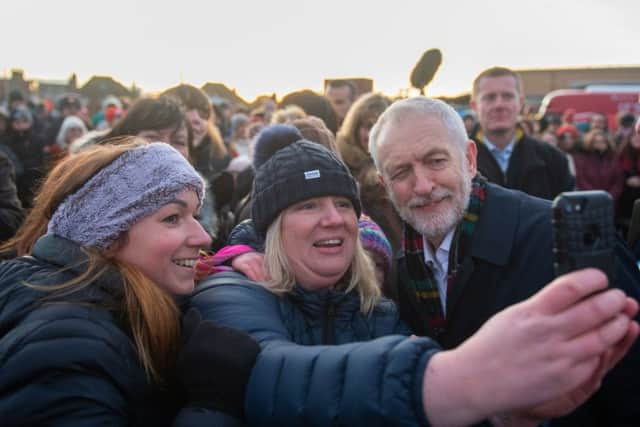Why opinion polls point to Labour losing its Yorkshire power base – Ed Jacobs


Yet the latest, and most comprehensive, polling to date in this election campaign indicates precisely that. It signals that there are now as many safe Conservative seats in the region as there are Labour ones.
Advertisement
Hide AdAdvertisement
Hide AdThis is a region that, historically, has been dominated by Labour. In 1997, admittedly a high point for the party, it received 52 per cent of the vote and won 47 out of the then 56 seats. In 2010 when Labour lost power, still nearly 35 per cent of voters in the region backed the party and 32 Labour MPs out of a total of 54 were elected.


The YouGov poll for The Times polled 100,000 people and extrapolated its findings across individual constituencies to indicate the current state of play in each. Across Yorkshire and the Humber, it indicates that for the first time since Margaret Thatcher’s landside of 1983, the Conservatives, at 40 per cent, will get more overall votes than Labour on 38 per cent.
Advertisement
Hide AdAdvertisement
Hide AdThis would lead to Labour winning 27 seats, just three more than the Conservatives. Two more Labour seats, Dewsbury and Keighley, are too close to call. If they also go Tory, then the parties will be close to level pegging, with Labour just having one more MP than the Tories.


Amongst the most startling constituency predictions are that the former mining areas of Don Valley and Rother Valley will be ‘likely Conservative’ – an unimaginable proposition given the bitter memories mining communities have of Margaret Thatcher and the 1984-85 miners’ strike.
Penistone and Stocksbridge, with its history of steel making, is also ‘likely Conservative’ as is Wakefield. One of the largest steel towns in the country, Scunthorpe, is ‘leaning Conservative’. On the east coast, Grimsby with its fishing and food processing heritage, is now down as ‘likely Conservative’.
In total seven seats could change from Labour to Conservative according to this poll. Even if only some of these seats go Tory, it will represent a dramatic change in the political make up here.
Advertisement
Hide AdAdvertisement
Hide AdThere are two explanations for this seismic shift. The largest catalyst is of course the EU referendum. Of the 24 seats in the region with the highest Leave vote, all 60 per cent or above, 20 were Labour at the last election. Of those, it is suggested six will go Conservative.
The other one forecast to switch, Colne Valley, recorded a smaller Leave vote of 50.1 per cent. The average Leave vote of the constituencies that might switch is 64.1 per cent, well above the national leave vote of 52 per cent. Voters in these areas are clearly not impressed by the ‘neutral’ position taken by Jeremy Corbyn over Brexit and are opting for the party that claims it will, to coin a phrase, “Get Brexit done”.
Talking of Jeremy Corbyn, he is the other major reason for the fall away in the traditional Labour vote. The emphasis here is on the word ‘traditional’. As indicated, most of the seven seats currently held by Labour that could go Tory on Thursday week are characterised by traditional industries with solid working class heritage. It is this, also generally older demographic, that is most disconnected from the type of leadership and more radically left-wing policies being put forward by Labour.
As class and background as a predictor of voting tendency breaks down, the most important determinant now is age. In all those seats projected to switch to the Conservatives, the proportion of those aged 50 or above is higher than the UK average. In 2017, the average age at which people were more likely to vote Conservative than Labour was 47.
Advertisement
Hide AdAdvertisement
Hide AdHow permanent these shifts, if they do carry through to the actual poll, will be is another question. Maybe one day the Brexit issue will be settled, and maybe if Labour do lose badly on December 12 and undergo a Blairite-type transformation, as they did after four consecutive defeats in 1992, what has been their traditional vote in this region will return.
But this cannot be relied on. All the indications are that far fewer voters are faithful to one particular party than used to be the case. Once they have broken their electoral habit of a lifetime, they are ‘in play’ at future elections. It should not be assumed that they will necessarily return to the Labour fold.
Ed Jacobs is Associate Director at The Public Affairs Company based in Leeds.